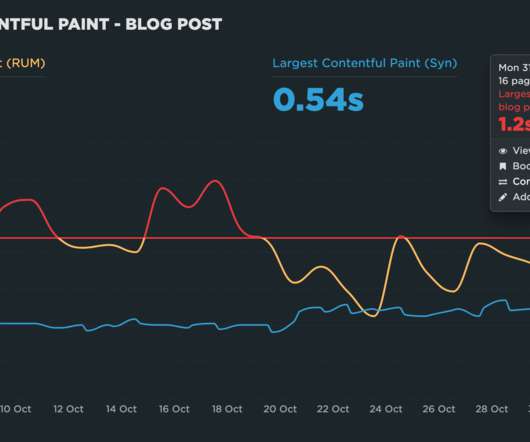Real user monitoring vs. synthetic monitoring: Understanding best practices
Dynatrace
JUNE 27, 2022
RUM gathers information on a variety of performance metrics. Data collected on page load events, for example, can include navigation start (when performance begins to be measured), request start (right before the user makes a request from the server), and speed index metrics (measure page load speed). Real user monitoring limitations.





















Let's personalize your content